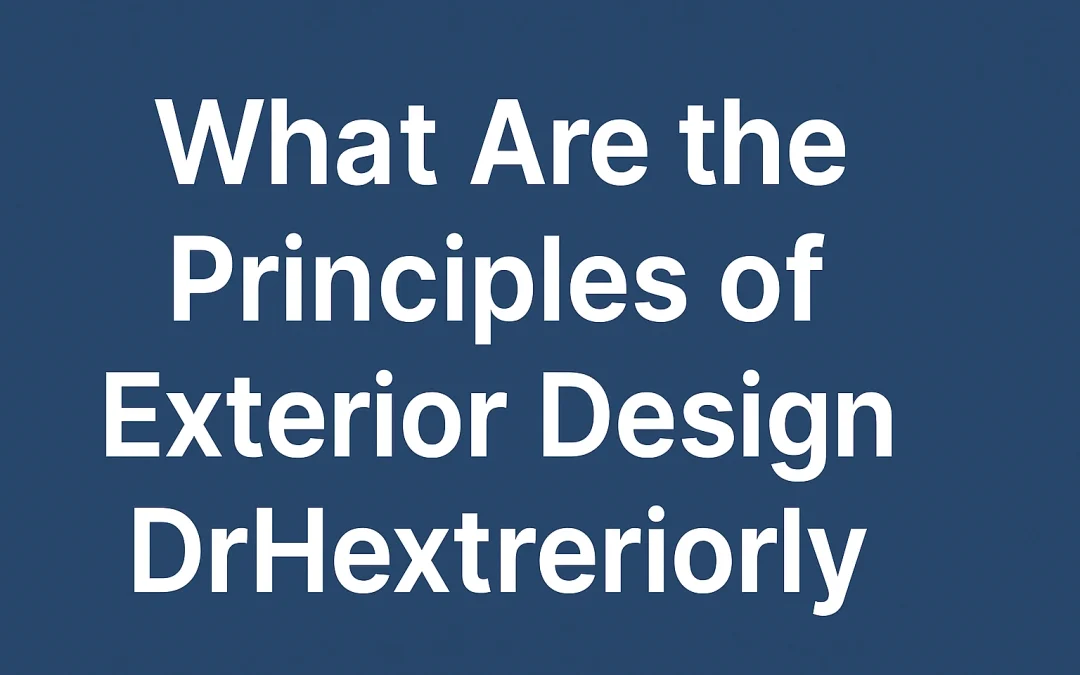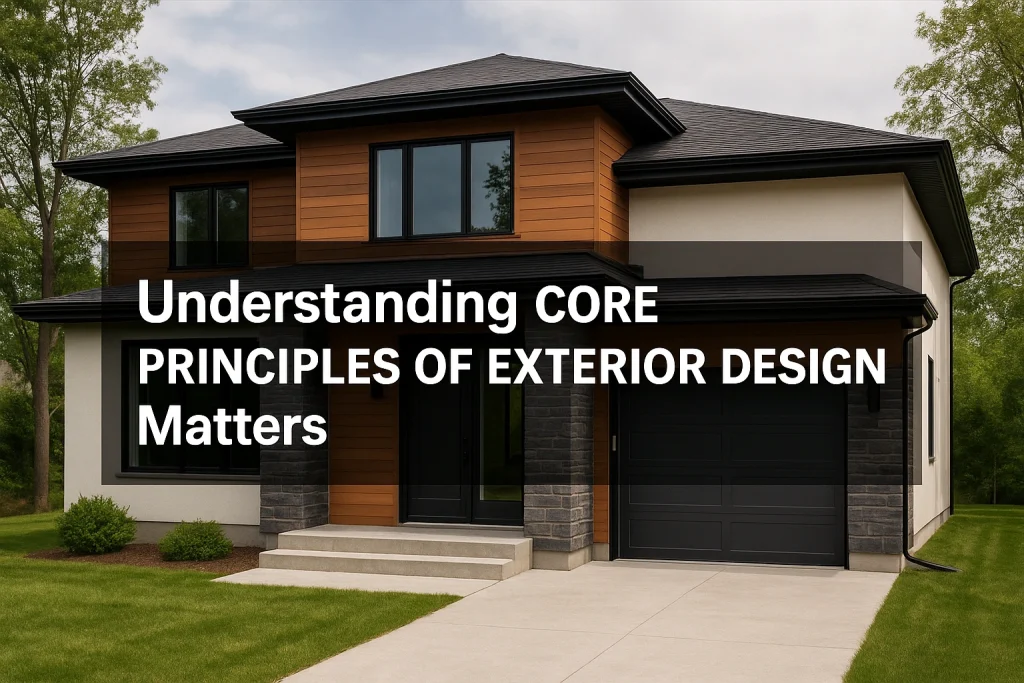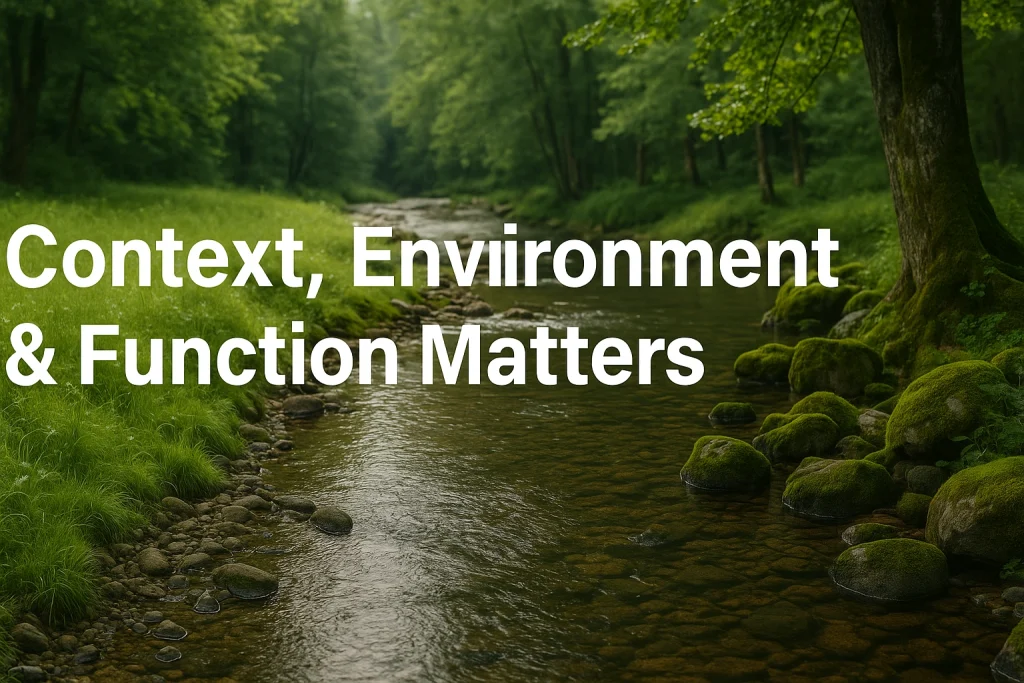1. Introduction: Exploring the Importance of Principles of Exterior Design DrHextreriorly
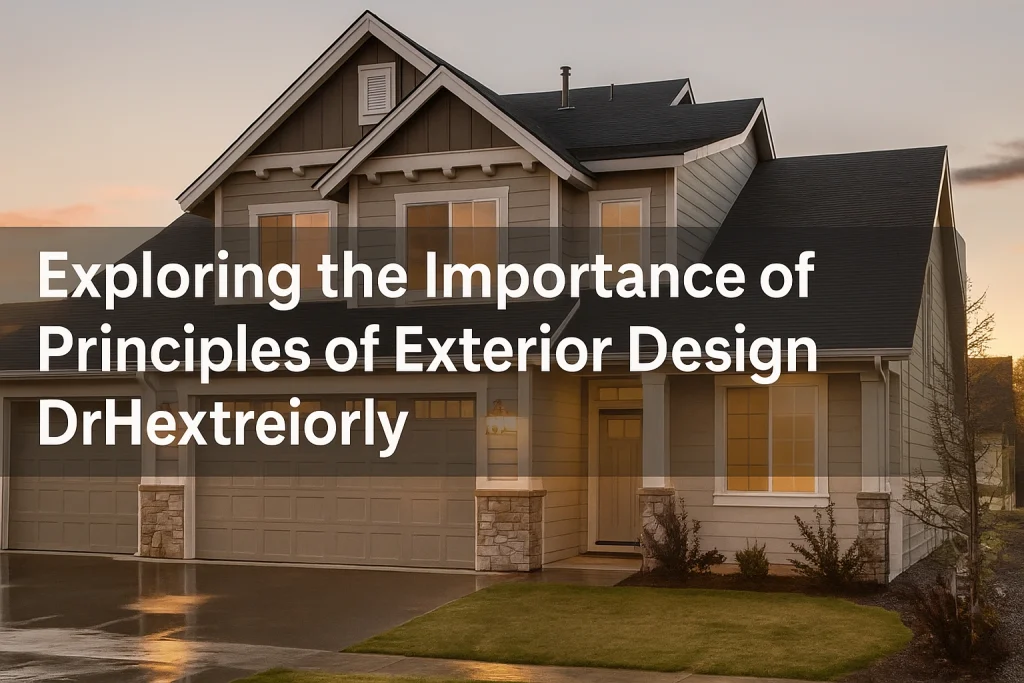
Exterior design is more than simply creating an attractive façade—it is the art of harmonizing form, function, and environment to create spaces that inspire and endure. The concept of DrHextreriorly embodies a refined approach to these principles, offering a framework that balances aesthetic appeal with structural integrity and contextual sensitivity. By embracing these principles, designers and homeowners can move beyond superficial decoration to craft exteriors that feel cohesive, timeless, and responsive to their surroundings.
The principles of Exterior Design DrHextreriorly focus on key elements such as balance, proportion, harmony, contrast, and functionality. These guidelines serve as the foundation for creating designs that not only captivate the eye but also meet practical needs—ensuring durability, sustainability, and a sense of place. Whether applied to residential architecture, commercial buildings, or landscape integration, these principles guide every decision, from material selection to the interplay of light and shadow.
Understanding and applying these concepts is essential for anyone seeking to elevate the built environment. DrHextreriorly provides a thoughtful lens through which architects, students, and homeowners can approach exterior design, transforming ordinary structures into visually compelling and contextually meaningful spaces. This exploration lays the groundwork for a deeper appreciation of how design principles shape our experience of the world beyond the walls.
2. Understanding DrHextreriorly Style & Its Context
If “DrHextreriorly” refers to a design brand, philosophy, or approach (as suggested by your target keyword), then before diving into general principles, it’s helpful to frame its identity—and then see how the universal rules overlay.
-
The DrHextreriorly method likely blends bold statement design with functional clarity—emphasizing form, texture, contrast, and unique detailing.
-
It may favor signature materials, dramatic lighting, or architectural accents that distinguish properties.
-
When you ask “what are the principles of exterior design drhextreriorly”, you implicitly ask: how do we adapt classic rules (balance, proportion, harmony) into a high-impact, branded aesthetic?
Therefore, in each principle section ahead, I’ll highlight how the DrHextreriorly mindset could emphasize or stretch those rules. This dual layering (classic + brand adaptation) gives your content differentiation and depth.
3. Core Principles of Exterior Design
These are the foundational rules that transcend style — yet each principle can be infused with DrHextreriorly’s distinctive voice.
3.1 Balance & Symmetry (and When to Embrace Asymmetry)
-
Balance refers to an even distribution of visual weight across a façade. This can be symmetrical (mirror-image) or asymmetrical (balanced via offset elements).
-
Symmetry offers a formal, stable, classical look. Many historic homes and traditional façades rely on symmetry (centered doors, balanced windows).
-
Asymmetry (used carefully) can add dynamic interest—if the visual weights are balanced (e.g. a heavy stone wall one side countered by tall windows or vegetation on the other).
-
In DrHextreriorly applications, designers might purposefully mix symmetrical massing with asymmetric accent features (a cantilevered balcony, a bold window grouping) to maintain both order and visual tension.
3.2 Proportion, Scale & Human-Centric Design
-
Proportion is the relationship between parts—window to wall, door height to façade width, roof pitch to building height.
-
Scale is how large or small an element is relative to human size or other architectural forms. A doorway must feel welcoming, not overwhelming.
-
A DrHextreriorly façade might exaggerate proportions (tall verticals, dramatic overhangs) but still root them by relating them to human scale—stepping elements down, layering volumes.
3.3 Unity, Harmony & Visual Cohesion
-
Unity means all elements “belong” together, forming a whole rather than disparate parts.
-
Harmony comes from shared color palettes, textures, or repeating motifs.
-
In a DrHextreriorly context, you might accentuate unity by repeating a signature material or design motif across the façade (e.g. vertical fins, angled louvers) while varying their scale or orientation.
3.4 Emphasis, Hierarchy & Focal Points
-
Every façade should have an emphasis—a focal area that draws the eye (entryway, large window, feature wall).
-
Hierarchy is about ordering: primary, secondary, tertiary elements. The primary feature (e.g. front door or tower) dominates.
-
DrHextreriorly style likely leans into a bold focal feature (a dramatic overhang, sculptural cantilever, accent lighting) that commands attention, with supporting secondary elements around it.
3.5 Contrast, Variety & Rhythm
-
Contrast in form, texture, color, or material adds visual interest (light vs dark, smooth vs rough).
-
Variety keeps monotony away; but use variety in moderation—too much causes chaos.
-
Rhythm / repetition of structural elements (columns, windows, fins) provides structure.
-
In DrHextreriorly usage, contrast might be pushed further (dark metal panels vs light stucco), but the rhythm must remain consistent to maintain balance.
4. Form, Massing & Scale in Exterior Design
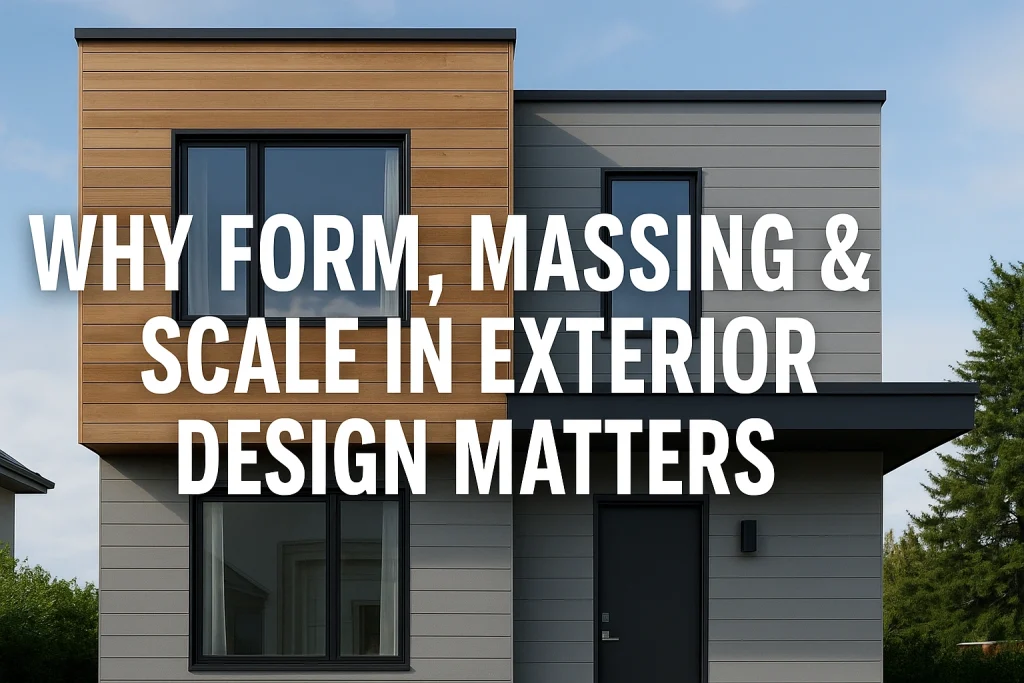
This cluster deals with the big shapes — how the volumes are arranged, stepped, and perceived.
Form, massing, and scale are the structural cornerstones of exterior design, shaping the first impression of any architectural project. Form refers to the overall shape and configuration of a building, defining its visual identity and how it interacts with the surrounding environment. Massing focuses on the arrangement and volume of these forms, balancing proportions and creating a sense of unity or deliberate contrast. Well-composed massing ensures that the structure feels cohesive, whether it is a single-family home or a large commercial development. Scale, meanwhile, relates the building’s size and elements—such as windows, doors, and rooflines—to human perception and neighboring structures. A well-balanced scale maintains harmony with the landscape and surrounding architecture, preventing the design from feeling either overwhelming or underwhelming. When these three elements are thoughtfully integrated, they establish not only the building’s character but also its relationship to the community and the natural context, resulting in exteriors that are both visually striking and contextually grounded.
4.1 Massing: How Volumes Shape the Exterior
-
Massing refers to the overall 3D volumes (boxes, wings, projections). Good massing designs chunk forms into manageable, human-perceivable pieces rather than one monolithic slab.
-
Layering mass, stepping back wings, and adding voids (recesses, overhangs) produce depth and shadow.
-
For DrHextreriorly, massing might be bold and geometric, with strong interplay of solids and voids, and dramatic overhangs or recesses.
4.2 Hierarchy & Visual Dominance in Massing
-
Among the masses, one should dominate (e.g. central core or front volume), with subsidiary wings stepping back in importance.
-
Use scale, height, or material contrast to distinguish primary from secondary volumes.
-
In DrHextreriorly, the main mass might be emphasized by material or lighting, with subsidiary masses subservient but visually coherent.
4.3 Scale Relative to Surroundings & People
-
Ensure no mass or form is so extreme that it overwhelms human perception.
-
Consider the adjacent context: neighboring buildings, trees, street scale.
-
DrHextreriorly projects might push scale higher (taller volumes), but careful buffering—setbacks, transitional volumes—can maintain a humane scale.
5. Materials, Texture & Color: Surface Language
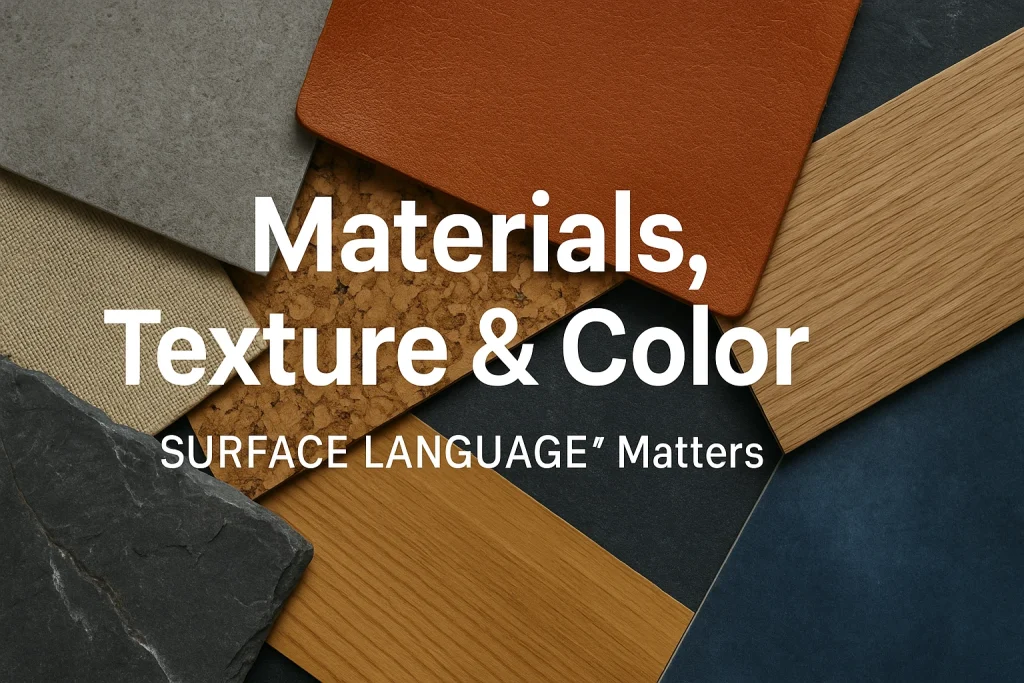
After form, the surface treatment conveys richness, identity, and durability.
The visual and tactile qualities of a building’s exterior communicate a powerful “surface language” that defines its character and mood. Materials—whether natural stone, wood, metal, or innovative composites—set the foundation for durability and style, influencing both how a structure weathers over time and how it harmonizes with its environment. Texture adds depth and dimension, creating visual interest through subtle variations such as the roughness of brick, the sleekness of polished concrete, or the warmth of timber grain.
Equally important, color shapes perception and emotional response; light tones can evoke openness and calm, while deep, saturated hues bring drama and focus. When thoughtfully combined, materials, texture, and color work together to create a cohesive narrative—one that not only enhances curb appeal but also reflects the design intent and the building’s relationship to its context. A successful exterior design carefully balances these elements, ensuring that the surface language speaks with clarity, harmony, and lasting impact.
5.1 Material Selection & Durability
-
Exterior materials must respond to climate, maintenance, lifespan.
-
Use combinations (stone, brick, metal, wood, glass) judiciously.
-
In DrHextreriorly style, a signature material (e.g. corrugated metal, concrete panels, dark metal accents) might be repeated across forms to tie the design identity.
5.2 Texture & Surface Contrast
-
Texture (smooth stucco, rough stone, ribbed metal) gives tactile and visual richness.
-
Contrasting textures provide depth (e.g. smooth walls adjacent to rough panels).
-
For DrHextreriorly, designers can exploit bold textural contrasts to amplify drama while keeping cohesion—texture transitions must follow logic (function, orientation, shadow).
5.3 Color Theory & Exterior Palettes
-
Exterior color palettes often operate in triads or analogous schemes, with neutral backgrounds and accent hues.
-
Consider how light and weathering affect colors over time.
-
DrHextreriorly might lean toward bold dark/neutral schemes (black, graphite, deep grays) with accent metallics or natural wood tones.
-
Use contrast between light and dark surfaces to highlight massing edges or focal elements.
6. Context, Environment & Function
Even a stunning design fails if it ignores site, climate, or functionality.
Successful exterior design begins with a deep understanding of context, environment, and function, three elements that work together to shape architecture that is both beautiful and practical. Context refers to the surrounding physical and cultural setting—existing buildings, local traditions, and neighborhood character—that guides a design to feel harmonious rather than intrusive.
Environment encompasses natural factors such as climate, sunlight, topography, and prevailing winds, which influence decisions about materials, orientation, and landscaping to ensure comfort and sustainability. Finally, function addresses how the exterior supports the building’s intended use, from providing welcoming entrances and accessible pathways to accommodating utilities and outdoor living spaces. When these three forces are thoughtfully balanced, the result is an exterior design that is visually compelling, environmentally responsive, and perfectly suited to the lifestyle or activities it serves.
6.1 Orientation, Climate & Solar Response
-
The building’s orientation affects sunlight, shading, heat gain/loss.
-
Use overhangs, sun-shading devices, or recessed fenestration for climate control.
-
In DrHextreriorly, these functional shading elements can be integrated as bold architectural features (e.g. horizontal fins or louvers).
6.2 Landscape Integration & Site Design
-
Landscape flows into building form: planting beds, pathways, ground plane materials join the building.
-
Consider visual continuation—e.g. stone in planters echoes façade stone.
-
A DrHextreriorly design might frame dramatic exterior volumes with structural planting, reflecting framing geometry in landscape design.
6.3 Sustainability & Passive Design Considerations
-
Use passive solar, cross-ventilation, thermal mass, insulation strategies.
-
Rainwater, green roofs, solar panels, low-maintenance finishes are part of logic.
-
When asking “what are the principles of exterior design drhextreriorly”, one should expect sustainable rigor—modern stylists rarely ignore climate.
-
Integrate green design visually (e.g. solar panels become architectural elements, vertical gardens integrated into façade).
7. Façade Elements & Architectural Detailing
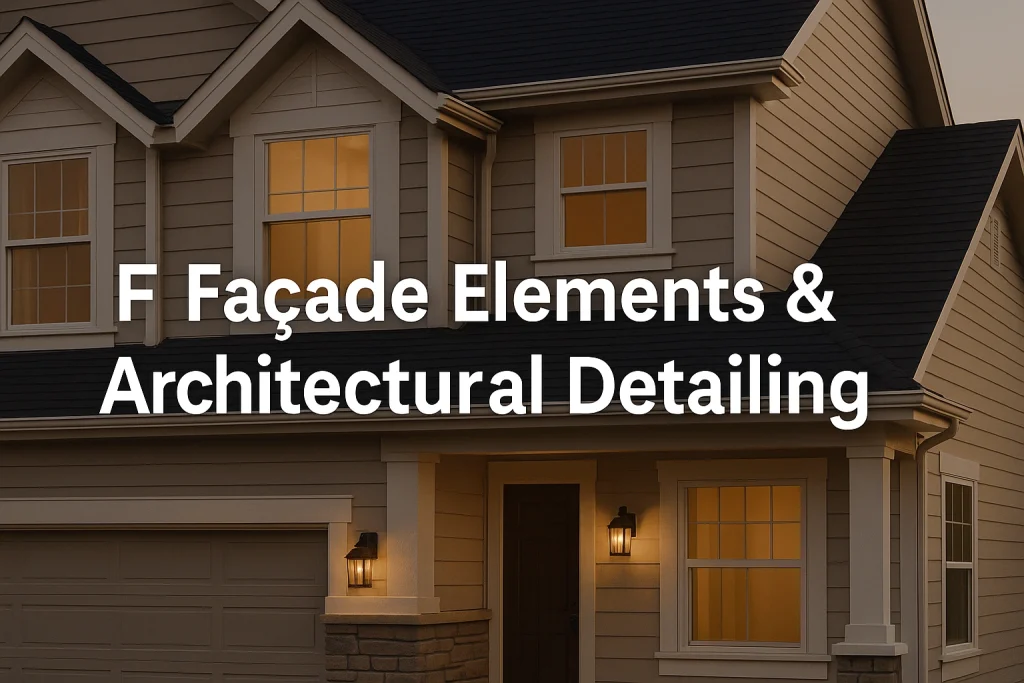
This is where theory meets built detail—windows, doors, cornices, roofs, etc.
Façade elements and architectural detailing are the defining features that give a building its character, identity, and visual appeal. The façade serves as the interface between the interior and the external environment, making it both a functional barrier and an artistic statement. Key elements such as windows, doors, cornices, columns, and cladding materials work together to create rhythm and proportion, guiding the eye and establishing harmony across the structure. Architectural detailing—such as intricate moldings, trims, reveals, and surface textures—adds depth and refinement, turning simple planes into visually engaging compositions.
Beyond aesthetics, these details often have practical roles: improving ventilation, controlling natural light, enhancing energy efficiency, and protecting the building from weathering. Whether executed in a contemporary minimalist style or a richly ornamented classical approach, thoughtful façade elements and precise detailing elevate a building from mere construction to timeless architecture, blending functionality with artistic expression.
7.1 Windows, Doors & Openings
-
Window/door placement, proportion, and alignment significantly affect harmony.
-
Mullion pattern, shape, size, and depth contribute to rhythm and depth.
-
DrHextreriorly variation: dramatic glass blocks, sculpted apertures, oversized door frames, or frameless glass transitions.
7.2 Roof Lines, Eaves & Overhangs
-
Roof shape (gabled, flat, shed) affects silhouette and massing.
-
Eaves and overhangs protect walls and offer shading.
-
In DrHextreriorly, overhangs can be bold, floating slabs or cantilevered volumes, exaggerated to become focal features.
7.3 Trim, Cornice, Moldings, Columns
-
Trim elements frame transitions (corners, windows, doors).
-
Columns or pilasters add vertical rhythm.
-
In DrHextreriorly, these often become accent, perhaps done in metal or contrasting color, or minimized for sleek modernism.
7.4 Entryway & Porch as Design Anchor
-
The entry should be welcoming and visually grounded.
-
Porch, portico, walkway alignments, canopy treatments all matter.
-
DrHextreriorly may treat the entry as a sculptural moment—use lighting, material contrast, depth, and projection to elevate it.
8. Lighting, Landscaping & External Integration
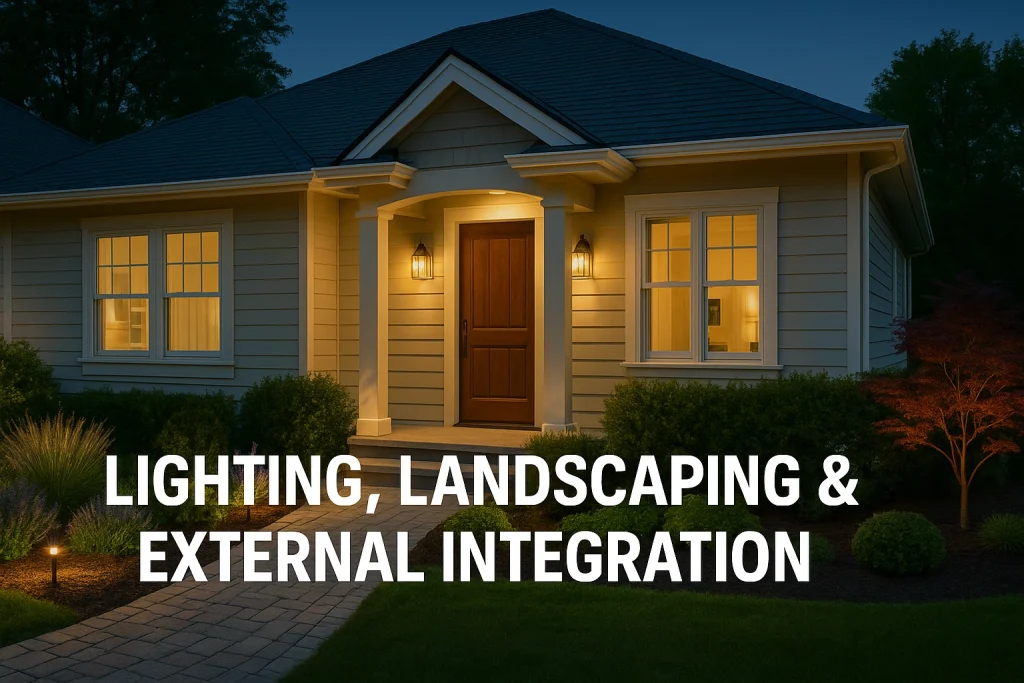
How your building “lives” with its surroundings at day and night.
8.1 Exterior Lighting & Nighttime Appeal
-
Lighting reveals form, enhances safety, and dramatizes features.
-
Use ambient, accent, and path lighting.
-
In DrHextreriorly, dramatic uplighting or shadow play can emphasize planes and textures—light becomes part of the design itself.
8.2 Planting, Hardscape & Ground Plane Design
-
Plants and hardscape define approach, soften edges, and lead the eye.
-
Hardscape materials (paving, stone, gravel) should relate to façade materials or contrast thoughtfully.
-
DrHextreriorly might mirror façade geometry in paving pattern or use linear planting bands echoing architectural lines.
8.3 Visual Continuity & Landscape Design
-
The transition from ground to building should feel seamless, not jarring.
-
Use material and motif continuations (e.g. vertical timber in planters matching siding).
-
DrHextreriorly designs likely emphasize this continuity—so the building doesn’t float above its site; it “emerges” from it.
9. Examples & Case Studies (Including DrHextreriorly Approach)

Examples are critical—they prove the “what are the principles of exterior design drhextreriorly” framework in action.
9.1 Residential Example A (Traditional / Transitional)
-
A house that balances symmetry, medium scale, warm textures, classical proportions.
-
Break down how each principle is satisfied (balance, material continuity, entry hierarchy, etc.).
-
Then show where a DrHextreriorly twist might reframe materials or lighting.
9.2 Modern / Minimalist Example B
-
Bold cubic volumes, flat roof, smooth surfaces, emphasis on massing and void.
-
Showcase how unity, contrast, and proportion work under minimalist restraint.
-
Apply DrHextreriorly: perhaps accent fins, bold contrast, signature color accent.
9.3 DrHextreriorly Signature Examples
-
If you have a portfolio or sample designs labeled “DrHextreriorly,” display them with annotations.
-
Show how the principles are adapted, stretched, or emphasized in that style.
-
Point out how the brand identity is expressed via material, light, proportion, and detail.
9.4 Lessons & Do’s / Don’ts
-
What to avoid: too many materials, weak focal point, inconsistent rhythm, neglected context, poor scale.
-
Do: maintain coherence, plan for climate, allow rhythm and repetition, prioritize a strong identity anchor, test in context.
10. Tips & Best Practices for Applying Exterior Design Principles

-
Start with massing and function before surface detailing.
-
Use material and color choices to reinforce form, not fight it.
-
Always test façades in different lighting (sun, shade) and viewpoints.
-
Use 3D modeling or mockups early to catch proportional errors.
-
Prioritize durability, maintenance, and climate responsiveness over purely aesthetic choices.
-
Use signature motifs sparingly but consistently to maintain a design identity.
-
Don’t overcomplicate—simplicity plus accent often wins.
-
Iterate: never settle on your first façade concept; test alternatives.
11. Common Mistakes & How to Avoid Them

-
Overloading with too many materials or colors → reduces cohesion.
-
Ignoring scale or human proportion → facade feels alien.
-
Weak or no focal point → façade lacks visual interest.
-
Neglecting climate or solar orientation → functional failures.
-
Poor transitions between building and landscape → disjointed feel.
-
Unbalanced massing or visual weight → awkward forms.
-
Failing to test in real context (adjacent buildings, trees) → unexpected clashes.
-
Excessive ornament inconsistent with core style → diluted identity.

